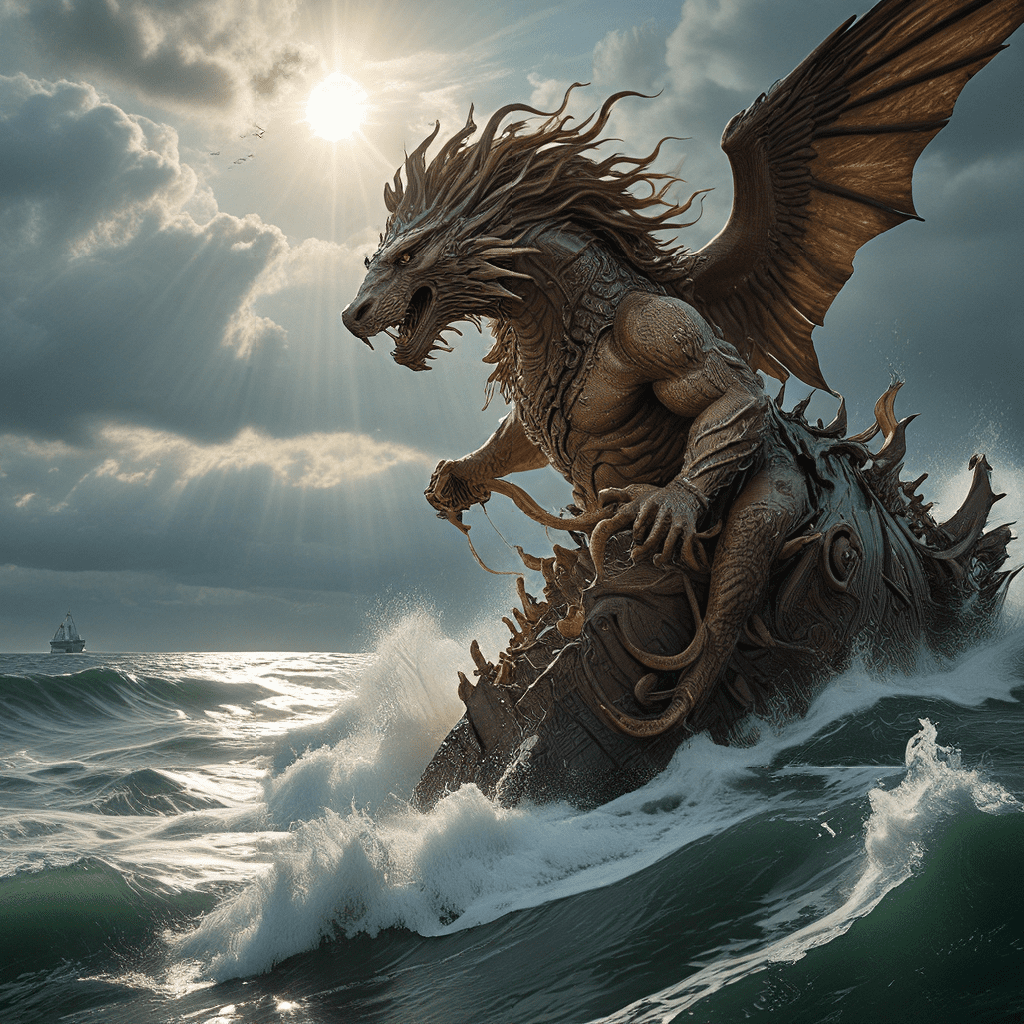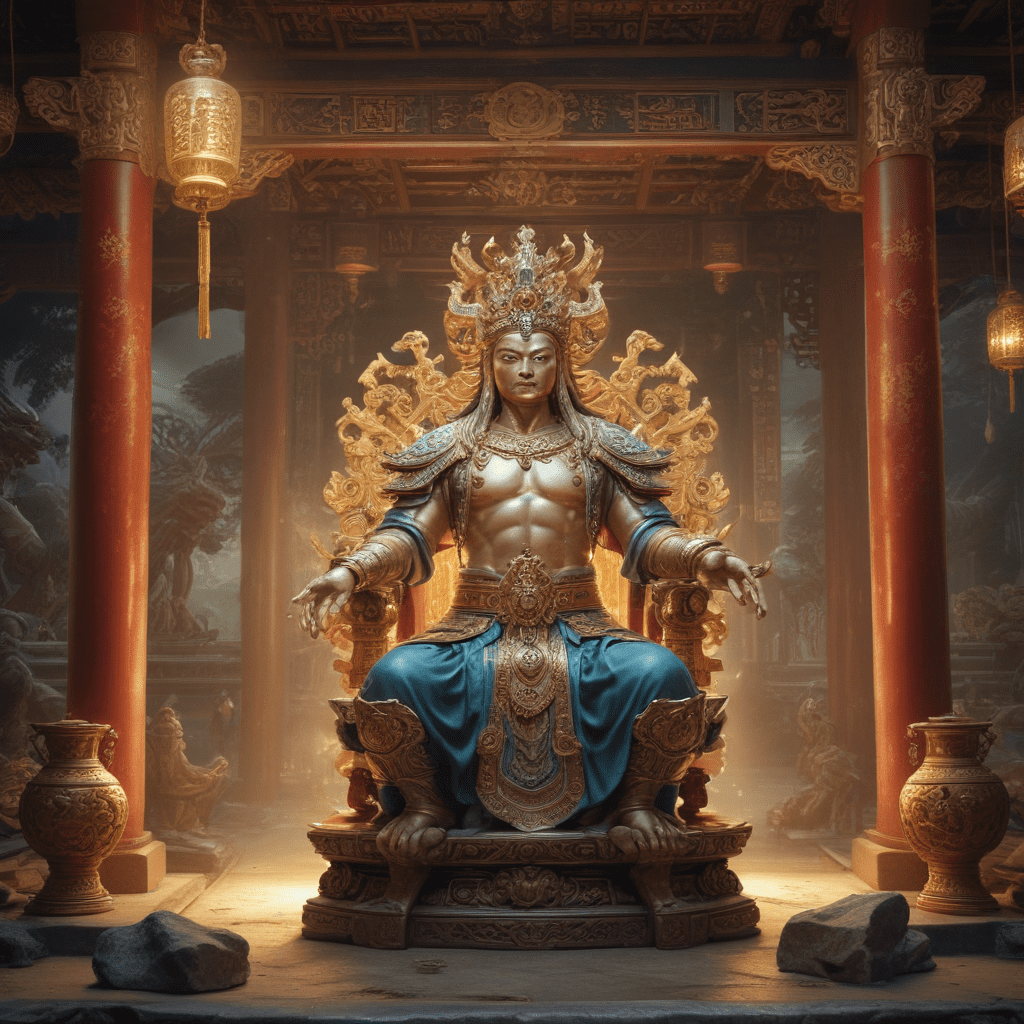Baltic Mythology: The Realm of Sea Creatures
The Baltic Sea, a vast body of water nestled between Northern Europe and Scandinavia, holds a rich tapestry of myths and legends. From the depths of its waters rise tales of mythical creatures, powerful deities, and ancient folklore. Baltic mythology, a vibrant blend of pagan beliefs and ancient traditions, is steeped in the mystery and allure of the sea. This exploration delves into the realm of Baltic sea creatures, their roles in mythology, and their enduring influence on Baltic folklore and culture.
The Sea in Baltic Mythology
The sea plays a pivotal role in Baltic mythology, serving as a powerful force of nature and a source of both abundance and danger. In ancient Baltic beliefs, the sea was seen as a living entity, a powerful being with its own personality and will. The sea was a provider, offering sustenance through fishing and trade. It also served as a pathway to other realms, connecting the land to the spirit world and the homes of mythical creatures. However, the sea could also be a treacherous force, capable of storms, shipwrecks, and mysterious disappearances. This duality, the balance between life and death, abundance and destruction, is reflected in the mythical creatures that populate the Baltic Sea.
Jūras Māte: The Mother of the Sea
Jūras Māte, meaning "Mother of the Sea" in Latvian, is a powerful and benevolent deity presiding over the Baltic Sea. She is often depicted as an elderly woman, dressed in flowing white robes, with a crown of seaweed and a mantle of seafoam. Jūras Māte is both a protector and a provider, ensuring the safety of sailors, bountiful catches of fish, and the health of the sea itself. She is known for her wisdom and compassion, guiding lost sailors and offering solace to those in need. Despite her nurturing nature, Jūras Māte has a stern side and can unleash her wrath upon those who disrespect the sea or its creatures.
The Jūras Velns: The Devil of the Sea
In contrast to the benevolent Jūras Māte, the Jūras Velns, meaning "Devil of the Sea," represents the dark and treacherous side of the sea. He is a malevolent spirit, often depicted as a monstrous creature with sharp claws, fangs, and a fearsome countenance. Jūras Velns is known for causing storms, shipwrecks, and drowning those who venture into his domain. He is a symbol of the sea’s unpredictable nature, its potential to bring devastation and destruction. Some believe he is the guardian of lost treasures and shipwrecks, guarding the secrets of the ocean depths.
The Laima: The Fate Weaver of the Sea
The Laima, meaning "Fate" in Latvian, is a powerful goddess who governs the destinies of all beings, including those who dwell within the sea. She is often depicted as a woman with a spindle and thread, weaving the threads of fate into intricate tapestries. The Laima's influence extends to the lives of sailors, fishermen, and sea creatures, determining their fate and the course of their lives. She is also associated with the sea’s ability to both give life and take it away, reflecting the cyclical nature of the ocean and the ebb and flow of life itself.
Jūras Sieva: The Sea Wife
In Baltic mythology, the sea is not only a realm of powerful deities but also a place where mythical entities dwell. One such creature is the Jūras Sieva, meaning "Sea Wife" in Latvian. Jūras Sieva is a mysterious being, often depicted as a beautiful woman with long, flowing hair and a captivating gaze. She is said to lure sailors to their doom with her enchanting voice and alluring beauty. Some legends describe her as a mermaid, a creature half-human and half-fish, while others portray her as a spirit who can shapeshift into different forms.
However, the Jūras Sieva is not always a malevolent force. Some tales depict her as a compassionate figure, offering solace to shipwrecked sailors or granting wishes to those who respect the sea. She is also associated with the sea's ability to both create and destroy, representing the balance of life and death, beauty and danger that exists within the vastness of the ocean.
The Perkūns: The Thunder God and Sea Guardian
Perkūns, meaning "Thunder" in Latvian, is not only the thunder god but also a guardian of the sea. He is a powerful and fearsome deity, often depicted as a giant warrior clad in armor, wielding a mighty hammer or axe that brings forth storms and thunder. Perkūns is responsible for controlling the weather, including the storms that can rage across the Baltic Sea. He is also seen as a protector of sailors, ensuring their safe passage and guiding them through treacherous waters. His presence is a reminder of the sea's power and the need to respect its forces.
Sea Serpents and Other Mythical Denizens
Beyond the deities and spirits, the Baltic Sea is home to a multitude of mythical creatures. Sea serpents, known as Jūras Čūskas in Latvian, are among the most prominent. These colossal serpentine creatures are said to inhabit the depths of the sea, their scales shimmering in the moonlight. Some legends describe them as benevolent beings, guarding the sea and protecting sailors from harm. Others, however, portray them as fearsome monsters, capable of swallowing ships whole or unleashing destructive storms.
The Baltic Sea is also said to be home to other mythical creatures, such as the Jūras Velna Suns, a monstrous dog that prowls the shoreline, and the Jūras Gars, a spirit that dwells within the sea, whispering secrets and causing misfortune. These creatures are a testament to the rich tapestry of folklore and mythology that surrounds the Baltic Sea, reflecting the ancient beliefs and fears that have shaped its cultural heritage.
Theories on the Origin of Baltic Sea Mythology
The origins of Baltic sea mythology are shrouded in mystery, but scholars have proposed various theories to explain its development. One theory suggests that it emerged from the ancient pagan beliefs of the Baltic peoples, shaped by their close relationship with the sea. Their reliance on fishing and seafaring would have led to a deep respect for the ocean's power and a desire to appease its forces. As a result, they created myths and legends that explained the sea's unpredictable nature and the dangers it presented.
Another theory suggests that Baltic sea mythology was influenced by ancient Greek and Roman mythology, which was spread through trade and cultural exchange. Certain figures, such as the sea serpent, appear in both Baltic and Greek mythology, suggesting a possible connection between these traditions. Furthermore, the Baltic mythology's emphasis on deities and mythical creatures reflects a common theme in ancient European mythology, suggesting a shared cultural heritage.
The Influence of Sea Creatures on Baltic Folklore and Culture
Baltic sea mythology has had a profound impact on Baltic folklore and culture, influencing everything from traditional tales and songs to rituals and beliefs. Sea creatures, in particular, have played a significant role in shaping the Baltic cultural identity. Tales of sea serpents, mermaids, and other mythical creatures have been passed down through generations, serving as cautionary tales about the dangers of the sea and the need to respect its power.
Sea creatures also appear in Baltic art, music, and literature, reflecting their enduring influence on the Baltic imagination. Folk songs often feature themes of sailing, fishing, and encounters with sea creatures, capturing the essence of Baltic folklore. The sea, with its mythical inhabitants, serves as a constant source of inspiration for Baltic artists and writers, reminding them of their ancestral heritage and the enduring power of the ancient tales.
FAQ
Q: What is the most powerful sea deity in Baltic mythology?
A: Jūras Māte, the Mother of the Sea, is considered the most powerful sea deity in Baltic mythology.
Q: Does the Baltic Sea have a mythical protector?
A: Perkūns, the thunder god, is seen as a protector of the Baltic Sea and sailors who navigate its waters.
Q: Are all sea creatures in Baltic mythology dangerous?
A: While some sea creatures are portrayed as dangerous and malevolent, others, like the sea serpent, are seen as benevolent protectors of the sea.
Q: How does Baltic mythology explain the sea's power?
A: Baltic mythology uses deities, spirits, and mythical creatures to explain the sea's power, unpredictability, and its potential for both abundance and destruction.
Q: What is the significance of sea creatures in Baltic folklore?
A: Sea creatures play a significant role in Baltic folklore, serving as cautionary tales, sources of inspiration, and a reflection of the Baltic cultural identity.




